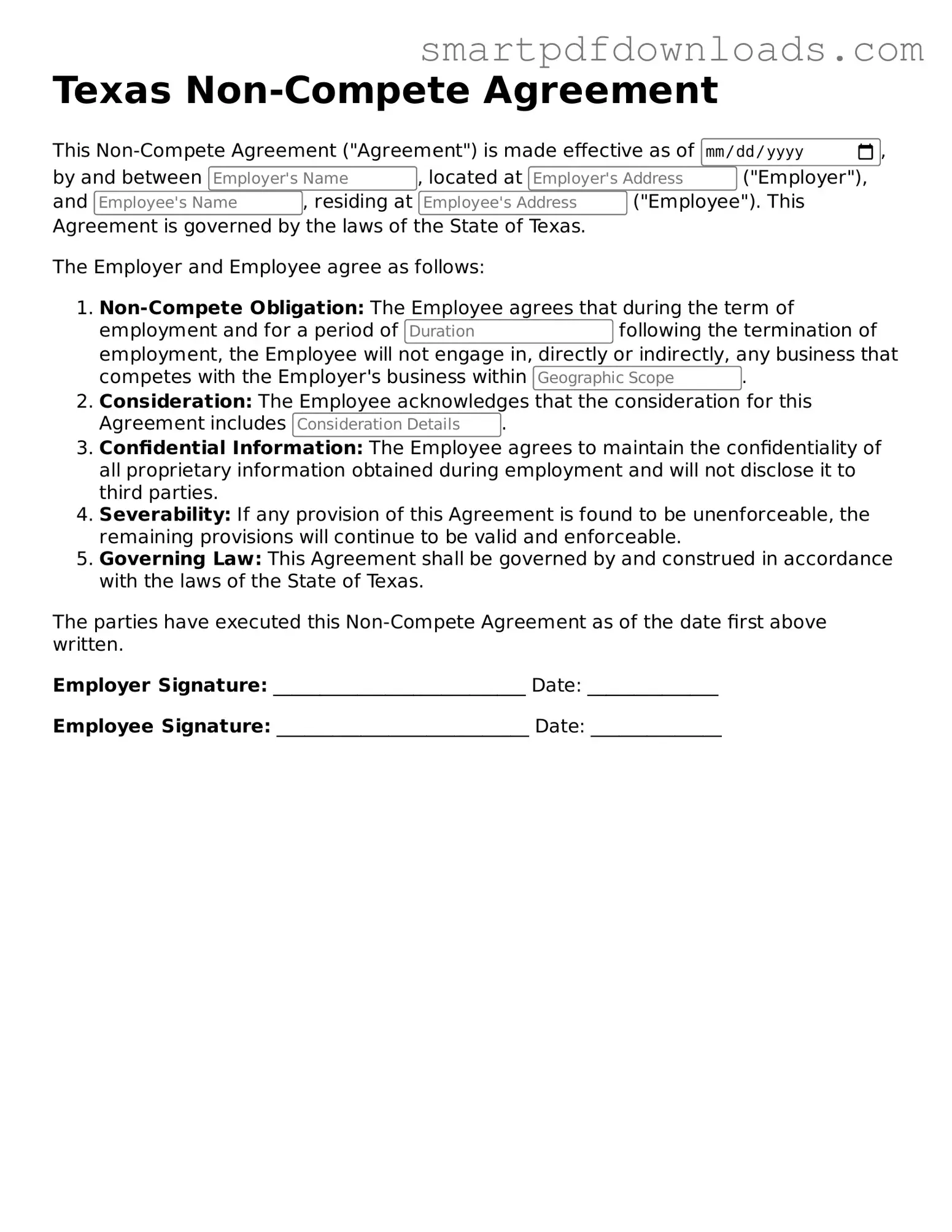Legal Non-compete Agreement Form for the State of Texas
A Texas Non-compete Agreement is a legal document that restricts an individual's ability to engage in similar business activities after leaving a job. These agreements are designed to protect a company's proprietary information and competitive edge. Understanding the nuances of this form is crucial for both employers and employees navigating the employment landscape in Texas.
Edit Non-compete Agreement Online
